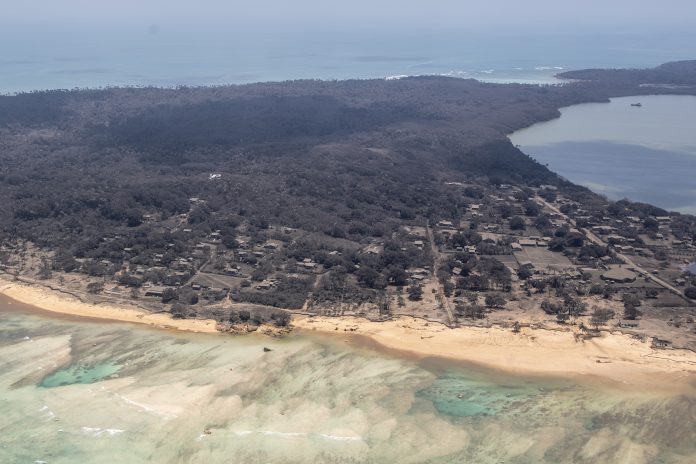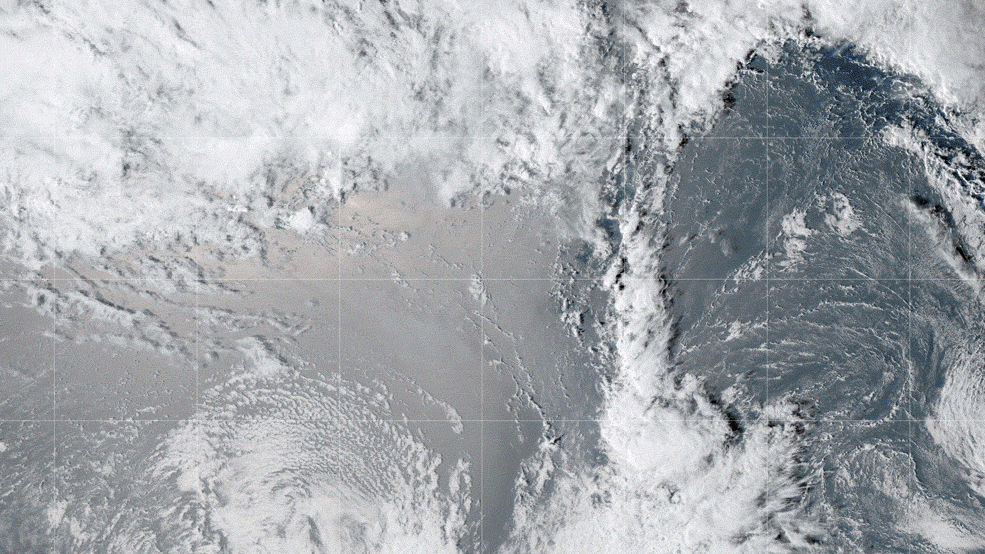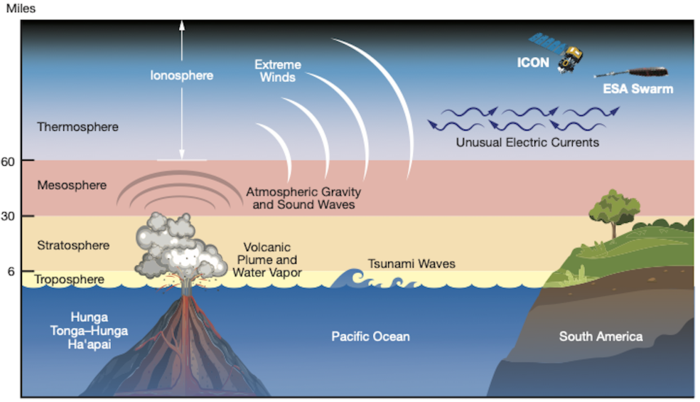
Electric currents in space were seen after the deadly volcanic eruption in Tonga, following atmospheric shock waves and sonic booms witnessed on Earth
The Hunga Tonga-Hunga Ha‘apai volcano, erupting on January 15, 2022, was predicted to be the largest volcanic eruption of the 21stcentury – with its effects even seen via electric currents in space.
After sending atmospheric shock waves, sonic booms, and tsunami waves around the world, researchers discovered the volcano’s effects also reached space, where hurricane-speed winds and unusual electric currents in space, formed in the ionosphere.
The ionosphere is Earth’s electrified upper atmospheric layer at the edge of space
ICON – NASA’s Ionospheric Connection Explorer – launched in 2019 to evaluate how Earth’s weather interacts with weather from space, attaining more information about whether our ionosphere is solely affected by the sun or space.
Scientists found in January 2022 that as the spacecraft passed over South America, it observed one such earthly disturbance in the ionosphere triggered by the Tonga volcano – showing that natural events can also alter weather patterns in the ionosphere.
Taking data from ICON and ESA’s (the European Space Agency) Swarm satellites, they saw the eruption created large pressure disturbances in the atmosphere, leading to strong winds. As the winds expanded upwards into thinner atmospheric layers, they began speeding up.

They eventually reached the ionosphere and the edge of space, when ICON clocked the windspeeds at up to 450 mph – making them the strongest winds below 120 miles altitude measured by the mission since its launch.
In the ionosphere, the extreme winds also affected electric currents. Particles in the ionosphere regularly form an east-flowing electric current in space, called the equatorial electrojet, powered by winds in the lower atmosphere.
Following the eruption, the equatorial electrojet surged to five times its normal peak power and dramatically flipped direction, flowing westward for a short period.
The volcanic eruption pushed a giant plume of gases, water vapour, and dust into the sky
Brian Harding, a physicist at University of California, Berkeley, and lead author on a new paper discussing the findings, said: “The volcano created one of the largest disturbances in space we’ve seen in the modern era. It is allowing us to test the poorly understood connection between the lower atmosphere and space.”
Jim Spann, space weather lead for NASA’s Heliophysics Division at NASA Headquarters in Washington, added: “These results are an exciting look at how events on Earth can affect weather in space, in addition to space weather affecting Earth. Understanding space weather holistically will ultimately help us mitigate its effects on society.”
Joanne Wu, a physicist at University of California, Berkeley, and co-author on the new study, said: “It’s very surprising to see the electrojet be greatly reversed by something that happened on Earth’s surface. This is something we’ve only previously seen with strong geomagnetic storms, which are a form of weather in space caused by particles and radiation from the Sun.”

NASA’s Goddard Space Flight Center/Mary Pat Hrybyk-Keith
A better understanding of what affects electrical currents in the ionosphere
A strong equatorial electrojet, as seen with the volcanic eruption, is linked to the redistribution of material in the ionosphere – which can disrupt GPS and radio signals that are transmitted through the region.
NASA research aims to further discover how both forces from above and below can disrupt weather patterns and affect our planet – as seen with NASA’s upcoming Geospace Dynamics Constellation, or GDC, mission which will use a fleet of small satellites, much like weather sensors on the ground, to track the electrical currents and atmospheric winds coursing through the area.
By better understanding what affects electrical currents in the ionosphere, scientists can be more prepared to predict severe problems caused by such disturbances.










